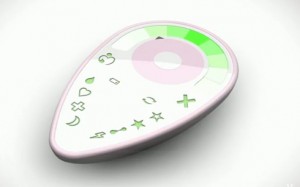
The Duofertility Reader
Late last year the US Food and Drug Administration (FDA) cleared Duofertility, a computerized basal body temperature thermometer developed by Cambridge Temperature Concepts, with a 510(K). Cambridge Temperature Concepts developed the device, which is intended for use in measuring and recording basal body temperature as an aid in ovulation prediction to aid in conception, according to the summary document prepared for the FDA filing. The company wrote that the device is explicitly not intended for use as a contraception device.
Cambridge Temperature Concepts is one of a handful of companies that has received financing from Qualcomm Life's recently launched investment fund.
MobiHealthNews first wrote about Duofertility last May: The device is a peel-n-stick sensor that adheres under the woman’s arm to monitor temperature and other indicators to provide 24-hour monitoring for more than six months. The device takes temperature readings up to 20,000 times per day and pits itself up against the much more expensive and invasive IVF.
While the Wall Street Journal reported yesterday that the Duofertility device took "nearly two years" to secure FDA clearance, the 510(k) summary document shows the application was submitted on August 31, 2010 so the time for this application to lead to clearance was actually closer to one year: It took 16 months. Perhaps more time from previous attempts were included in the WSJ's figure.
In the filing Temperature Concepts claims to be substantially equivalent to the Petit Sophia and Lady-Comp devices, which had previously received clearance. Each of the devices leverage basal body temperature, a thermistor sensor, accuracy of +/- 0.05 degree C, user input, and PC display (graphs viewable from PCs.)
The Duofertility Monitor, however, includes additional sensors: It makes use of two thermistor sensors instead of one and it also has an accelerometer sensor embedded to track movement. While the incumbent devices measure temperature one time upon the user's waking, the Duofertility Monitor is worn for extended periods of time and collects temperature readings automatically. The other devices also measure temperature orally, while Duofertility measures it axillary from a peel-and-stick patch worn on the skin.
Duofertility also transfers its data wirelessly. The device only transmits when the user holds the sensor up to a companion "reader" device that has cellular connectivity embedded. Cambridge Temperature Concepts points to one other wireless sensor patch that also wirelessly transmits temperature data, the VitalSense Sensor developed by Respironics. That device, however, does not appear to be used for conception purposes.
Cambridge Temperature Concepts CEO Shamus Husheer provided the WSJ with a glimpse at how the company's Duofertility device could be helpful beyond its intended use for conception: Since women using Duofertility devices report anything that might affect their body temperature, "it allows us to build up profiles of illnesses without ever setting foot in a hospital," Husheer told the WSJ. "More importantly we can see what those illnesses look like in the general population who are otherwise normally healthy. People who have a cold don't go to the doctor. Where else are you going to get that data?"
Be sure to read the entire WSJ report (subscription required), which includes a dismissal of the gamification of healthcare trend from an executive at Replay Digital, which developed the recently launched GSK MyAsthma app.


















